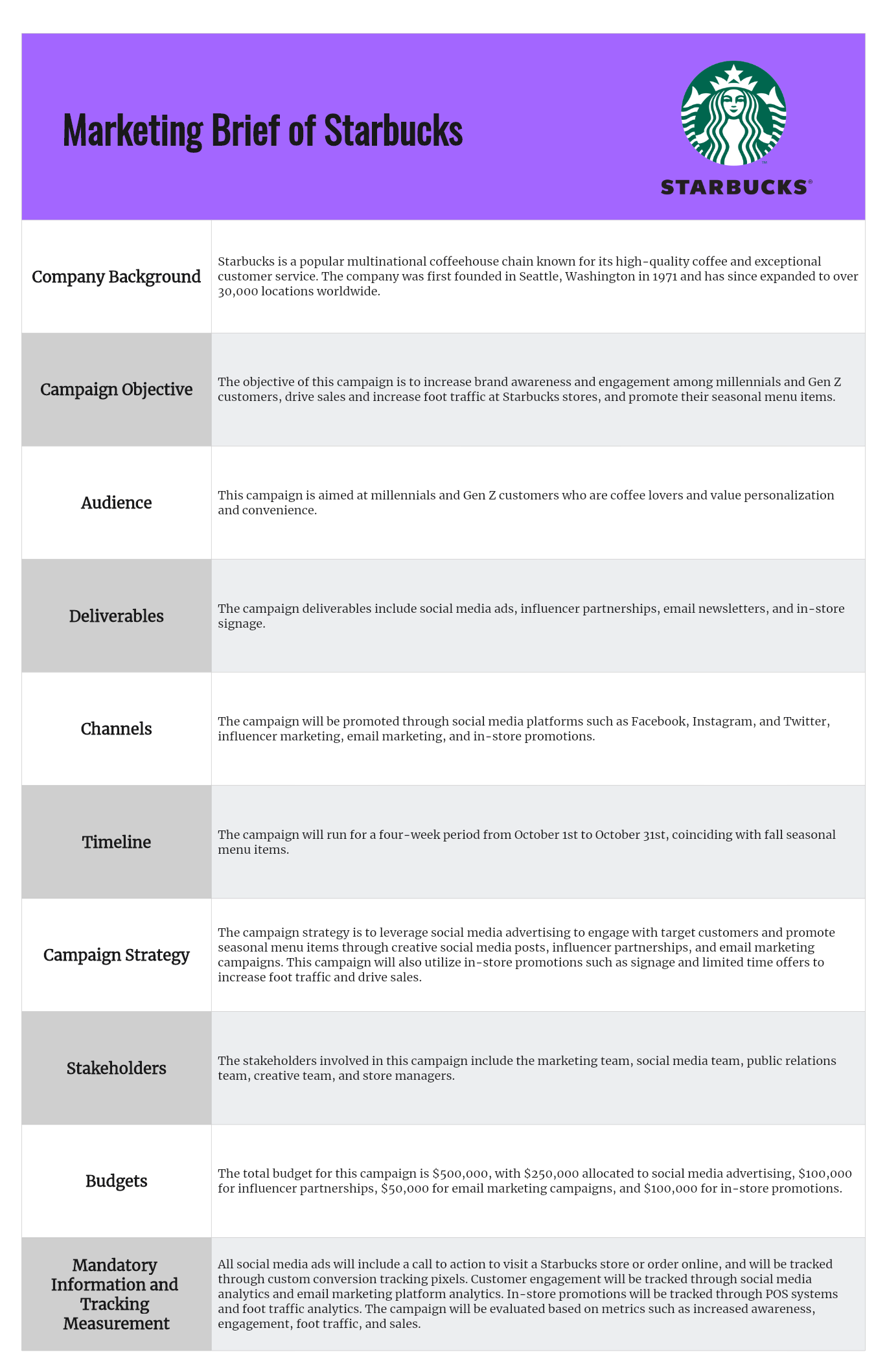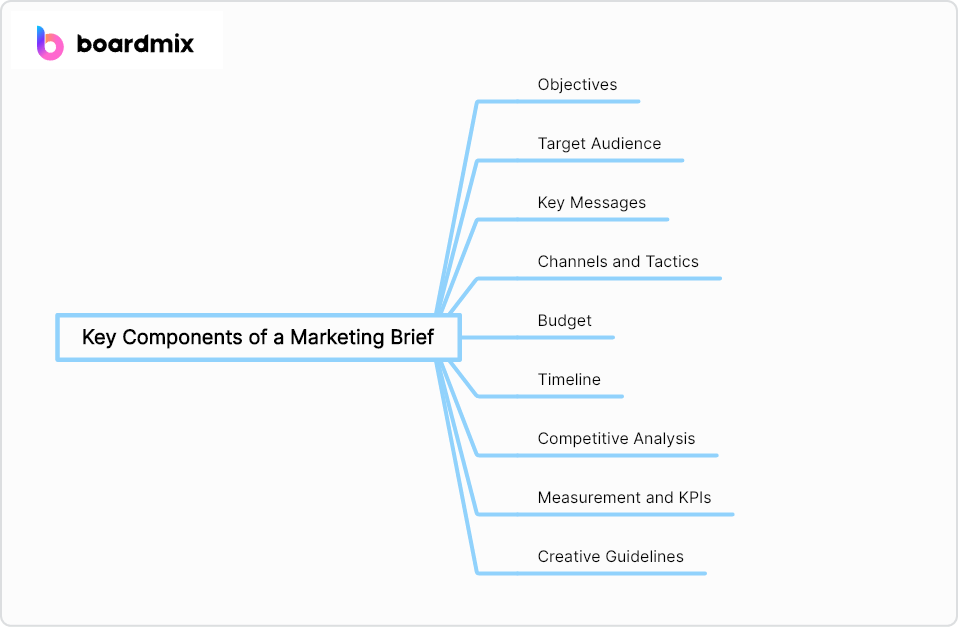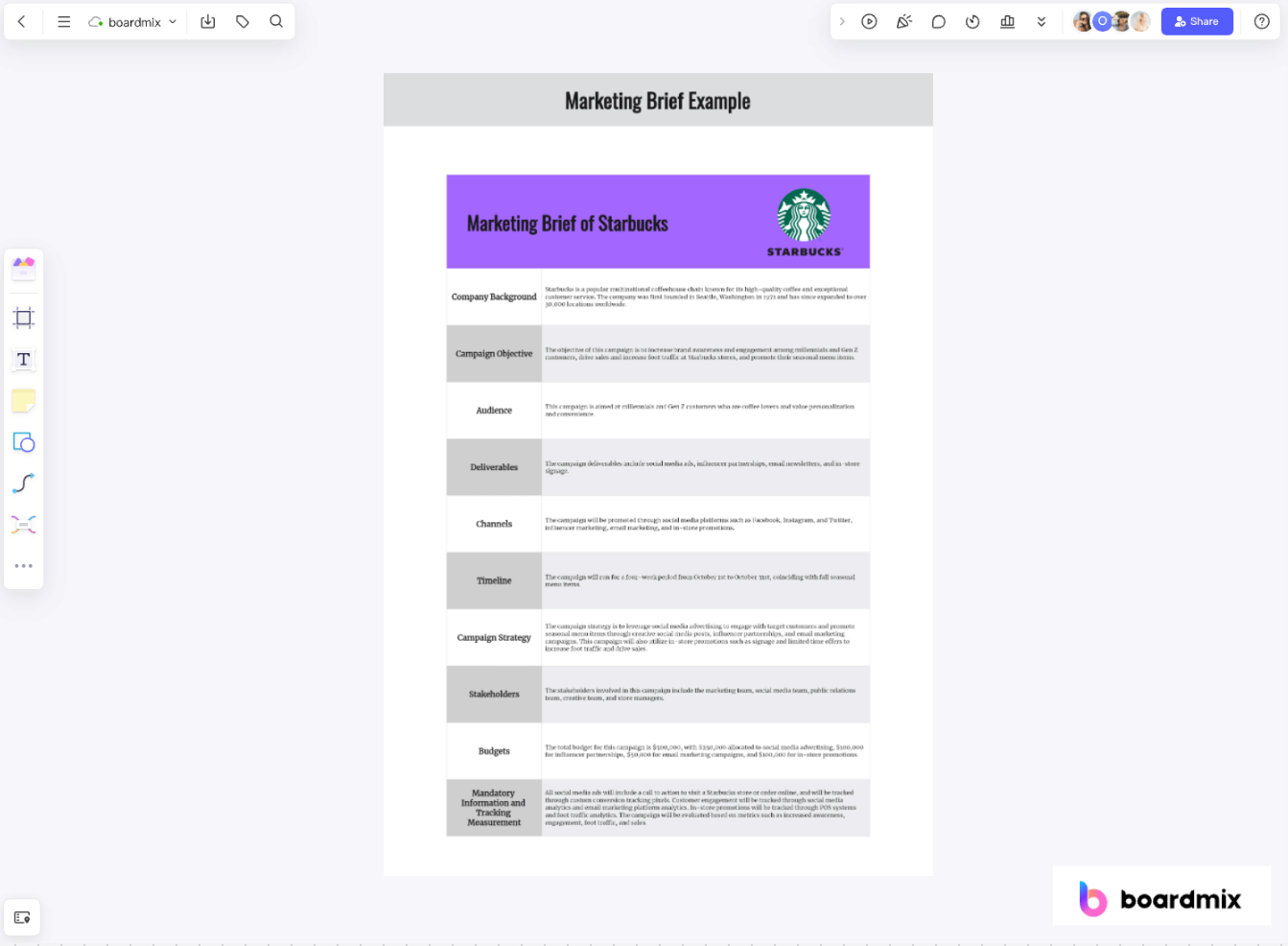In the dynamic landscape of business, marketing plays a pivotal role in establishing a brand's identity, reaching target audiences, and driving sales. A crucial step in any successful marketing campaign is the creation of a marketing brief. This document serves as a roadmap, guiding marketing teams through the planning and execution phases of a campaign. In this article, we'll delve into the key components of a marketing brief and provide insights into crafting an effective one.

Part 1. What Is a Marketing Brief?
A marketing brief is a document that outlines the key elements and objectives of a marketing project or campaign. It serves as a roadmap for all stakeholders involved, providing a clear and concise overview of the goals, target audience, messaging, budget, timelines, and other essential details. The purpose of a marketing brief is to ensure that everyone working on the project understands the vision, strategy, and expectations.
Part 2. What Is the Purpose of a Marketing Brief?
The purpose of a marketing brief is to provide a comprehensive and clear overview of a marketing project or campaign, serving as a guide for all stakeholders involved. Here are some specific purposes:
Clarity of Objectives: The marketing brief clearly outlines the goals and objectives of the marketing campaign. This ensures that everyone involved understands what the project is meant to achieve.
Alignment of Stakeholders: A marketing brief helps align all stakeholders, including marketing teams, creative teams, executives, and any other contributors. It ensures that everyone is on the same page regarding the overall strategy and goals.
Guidance for Creative Teams: For campaigns involving creative elements, such as advertisements, graphics, or content, a marketing brief provides guidelines for the creative teams. It outlines key messages, target audience, and other details to inspire and guide creative development.
Budget Management: The budget allocated for the marketing project is clearly stated in the brief. This helps in managing resources effectively and ensures that the campaign stays within budgetary constraints.
Timeline and Deadline Management: A marketing brief includes a timeline with milestones and deadlines. This helps in managing the project's progress, ensuring that tasks are completed on time and the campaign launches according to plan.
Consistent Messaging: The brief establishes key messages that should be communicated to the target audience. This ensures consistency in branding and messaging across various marketing channels.
Measuring Success: The marketing brief defines key performance indicators (KPIs) and metrics that will be used to evaluate the success of the campaign. This helps in assessing the effectiveness of the marketing efforts and making data-driven decisions.
In summary, a marketing brief is a tool that promotes clarity, alignment, and efficiency throughout the entire marketing process, from planning and development to execution and evaluation. It helps ensure that marketing efforts are strategic, well-coordinated, and ultimately successful in achieving the desired objectives.
Part 3. What Are the Key Components of a Marketing Brief?
The key components of a marketing brief may vary depending on the specific project or campaign, but generally, it includes the following essential elements:

Objectives: Clearly define the goals and desired outcomes of the marketing campaign. This could include increasing brand awareness, driving sales, launching a new product, or achieving other specific targets.
Target Audience: Identify the demographic, psychographic, and other relevant characteristics of the audience you intend to reach with your marketing efforts.
Key Messages: Outline the main points or messages that should be communicated to the target audience. This helps maintain consistency in branding and positioning.
Channels and Tactics: Specify the marketing channels and tactics that will be used to reach the target audience. This could include digital advertising, social media, email marketing, content creation, events, and more.
Budget: Clearly state the budget allocated for the marketing project, including any specific allocations for different channels or activities.
Timeline: Provide a timeline with key milestones and deadlines for the various stages of the marketing campaign, helping to ensure that the project stays on schedule.
Competitive Analysis: Include information about competitors and how your marketing strategy differentiates itself in the market.
Measurement and KPIs: Define the metrics that will be used to measure the success of the marketing campaign. This could include key performance indicators (KPIs) such as website traffic, conversion rates, or social media engagement.
Creative Guidelines: If applicable, include guidelines for the creative elements of the campaign, such as design, imagery, and tone of voice.
A well-crafted marketing brief incorporates these components to provide a comprehensive guide for all stakeholders involved in the marketing project. It ensures that everyone understands the strategy, objectives, and expectations, leading to a more coordinated and effective marketing effort.
Part 4. Craft Marketing Brief Easily with Boardmix
Boardmix, your ultimate online whiteboard solution, is designed to streamline the process of crafting a marketing brief. With our extensive library of drawing templates, you can easily visualize and organize your ideas, making the creation of a comprehensive marketing brief a breeze. Whether you're brainstorming campaign strategies or outlining target audience profiles, Boardmix allows you to collaborate in real time with your team, ensuring everyone stays on the same page.

Key features of Boardmix:
- Extensive Library of Drawing Templates: Boardmix offers a wide range of pre-designed templates that can be used to quickly start brainstorming, planning, or designing.
- Real-time Collaboration: With Boardmix, teams can work together on the same board in real-time, no matter where they are located.
- Easy-to-use Interface: Boardmix's intuitive interface makes it easy for anyone to start using the tool without any steep learning curve.
- Browser-based Application: No need for any downloads or installations - Boardmix works directly in your browser for maximum convenience and accessibility.
- Secure and Private: All your data on Boardmix is encrypted and stored securely, ensuring your ideas and information stay private.
FAQs about Marketing Brief
1. What is the difference between a creative brief and a marketing brief?
A creative brief and a marketing brief are distinct documents in the realm of advertising and promotion. A creative brief primarily directs the creative team, emphasizing the artistic execution of a project. It delves into specifics such as visual elements, tone, and brand guidelines. Conversely, a marketing brief is more comprehensive, guiding the entire marketing strategy. It encompasses market analysis, target demographics, overarching goals, budget considerations, and key performance indicators. While a creative brief is tailored for designers and copywriters, the marketing brief targets a broader audience, including marketing managers and executives. Essentially, the creative brief zooms in on the artistic nuances, while the marketing brief provides a holistic overview of the marketing strategy, incorporating both creative and strategic elements to ensure alignment with organizational objectives.
2. What is a product marketing brief?
A product marketing brief is a concise document that outlines key details and strategies for promoting a specific product. It typically includes information about the target audience, unique selling propositions, competitive landscape, messaging, and positioning within the market. The document serves as a guide for the product marketing team, providing a clear direction for crafting compelling marketing campaigns and materials. A well-crafted product marketing brief ensures alignment between product features and customer needs, facilitating effective communication and successful product launches in the marketplace.
3. Why are marketing briefs important?
Marketing briefs are crucial as they serve as strategic roadmaps for effective campaigns. They provide a clear outline of objectives, target audiences, key messages, and timelines. A well-defined marketing brief aligns teams, ensuring everyone understands the project's goals, and minimizing misunderstandings. It acts as a reference point for decision-making, helping teams stay on course and maintain consistency in branding and messaging. With insights into market analysis, competition, and KPIs, marketing briefs empower teams to make informed decisions, allocate resources efficiently, and measure the success of their efforts, ultimately contributing to the overall effectiveness and success of marketing initiatives.
Conclusion
A well-crafted marketing brief is an indispensable tool for the success of any marketing campaign. It serves as a guiding document that aligns all team members and stakeholders toward common goals. By incorporating the key components discussed in this article and adopting a collaborative and audience-focused approach, marketers can increase the likelihood of executing successful and impactful campaigns.
Experience the future of crafting marketing briefs with Boardmix. Our extensive library of drawing templates and real-time collaboration features make it easier than ever to visualize, organize, and share your ideas. Say goodbye to the hassle of downloads or installations - just open Boardmix in your browser and start creating a comprehensive marketing brief in no time.













